
Overview
This article delineates ten essential strategies for optimizing web conversion rates specifically tailored for direct-to-consumer (DTC) brands. It emphasizes techniques such as:
- Personalized user experiences
- Compelling calls to action
- The strategic use of analytics
Each strategy is underpinned by robust research and illustrative examples, demonstrating that the implementation of these tactics can markedly enhance customer engagement. Ultimately, these enhancements lead to increased sales and improved conversion rates, providing a clear pathway for brands aiming to elevate their performance in the competitive marketplace.
Introduction
In an increasingly competitive landscape, direct-to-consumer (DTC) brands encounter the urgent challenge of transforming casual visitors into loyal customers. By implementing effective web conversion optimization strategies, these companies can unlock substantial growth potential and enhance customer engagement. However, the path to mastering conversion rates is laden with complexities—what essential tactics can propel a brand's online success? This article explores ten critical strategies that DTC brands can adopt to optimize their web presence and drive conversions, ensuring they maintain a competitive edge in the ever-evolving digital marketplace.
Parah Group: Comprehensive Conversion Rate Optimization Services
Parah Group stands as a leader in providing a comprehensive range of web conversion optimisation services specifically tailored for direct-to-consumer (DTC) companies. Their offerings include:
- Client session recordings
- Competitor analysis
- Persuasive copywriting
- UI/UX design
- Customer surveys
- Ongoing A/B testing
This thorough strategy ensures that every element of a client's website is meticulously through web conversion optimisation, addressing the unique challenges faced by DTC companies in a competitive marketplace. By leveraging these services, businesses can significantly enhance their conversion rates, ultimately driving growth and success.
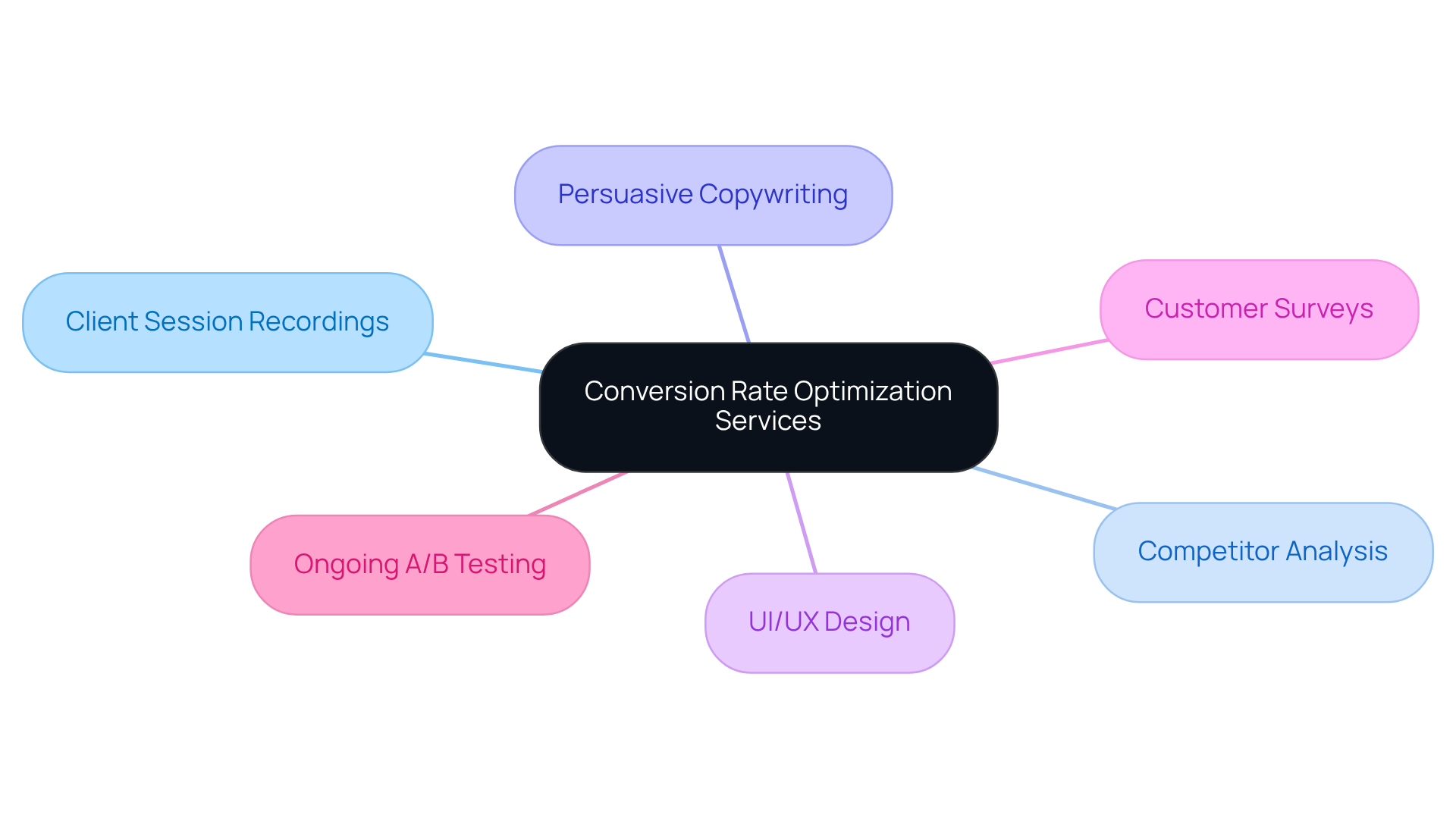
Leverage Analytics and User Feedback for Insightful Improvements
DTC companies can significantly enhance their success rates by leveraging analytics tools like Google Analytics and heat maps to scrutinize visitor behavior and pinpoint friction points within the sales process. When this data is integrated with feedback gathered from surveys and interviews, companies obtain vital insights into and pain points. This data-driven approach empowers companies to make informed decisions that not only improve customer experience but also focus on web conversion optimisation to drive higher success rates.
Research indicates that displaying client reviews can boost conversions by as much as 270%, underscoring the necessity of incorporating customer feedback into web conversion optimisation strategies. Furthermore, 85% of consumers trust online reviews as much as personal recommendations, making it imperative for companies to actively seek and showcase user insights.
By prioritizing user feedback, DTC companies can refine their offerings and cultivate a more engaging shopping experience, ultimately resulting in increased sales and enhanced customer loyalty.
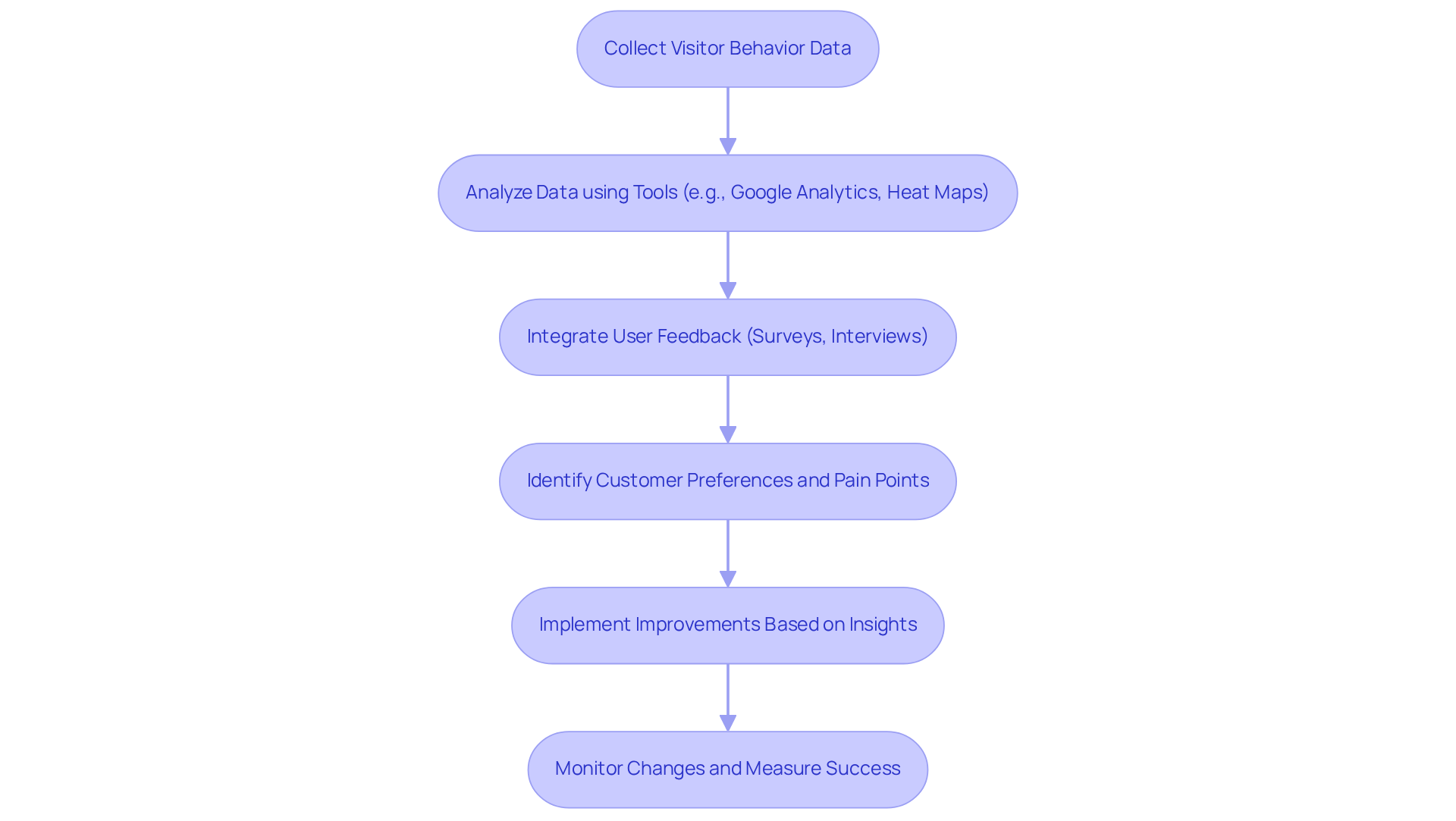
Enhance Website Speed and Performance for Better User Experience
Improving website speed is crucial for web conversion optimisation and driving sales rates among direct-to-consumer companies. By optimizing images, utilizing browser caching, and minimizing HTTP requests, brands can significantly enhance their site performance. Research indicates that a mere 1-second delay in page response can reduce effectiveness by 7%. In contrast, sites that load in 1 second achieve nearly 40% success rates, compared to just 29% for those taking 3 seconds.
Tools like are invaluable for pinpointing specific areas that require improvement. Furthermore, faster websites play a crucial role in web conversion optimisation by enhancing user experience, leading to lower bounce rates, and ultimately fostering increased sales rates. Notably, brands such as Best Buy have experienced a remarkable 20% rise in performance after optimizing their site speed, underscoring the tangible benefits of these strategies.
Implementing these performance enhancement methods can cultivate a more engaging and efficient online presence for DTC companies by focusing on web conversion optimisation.
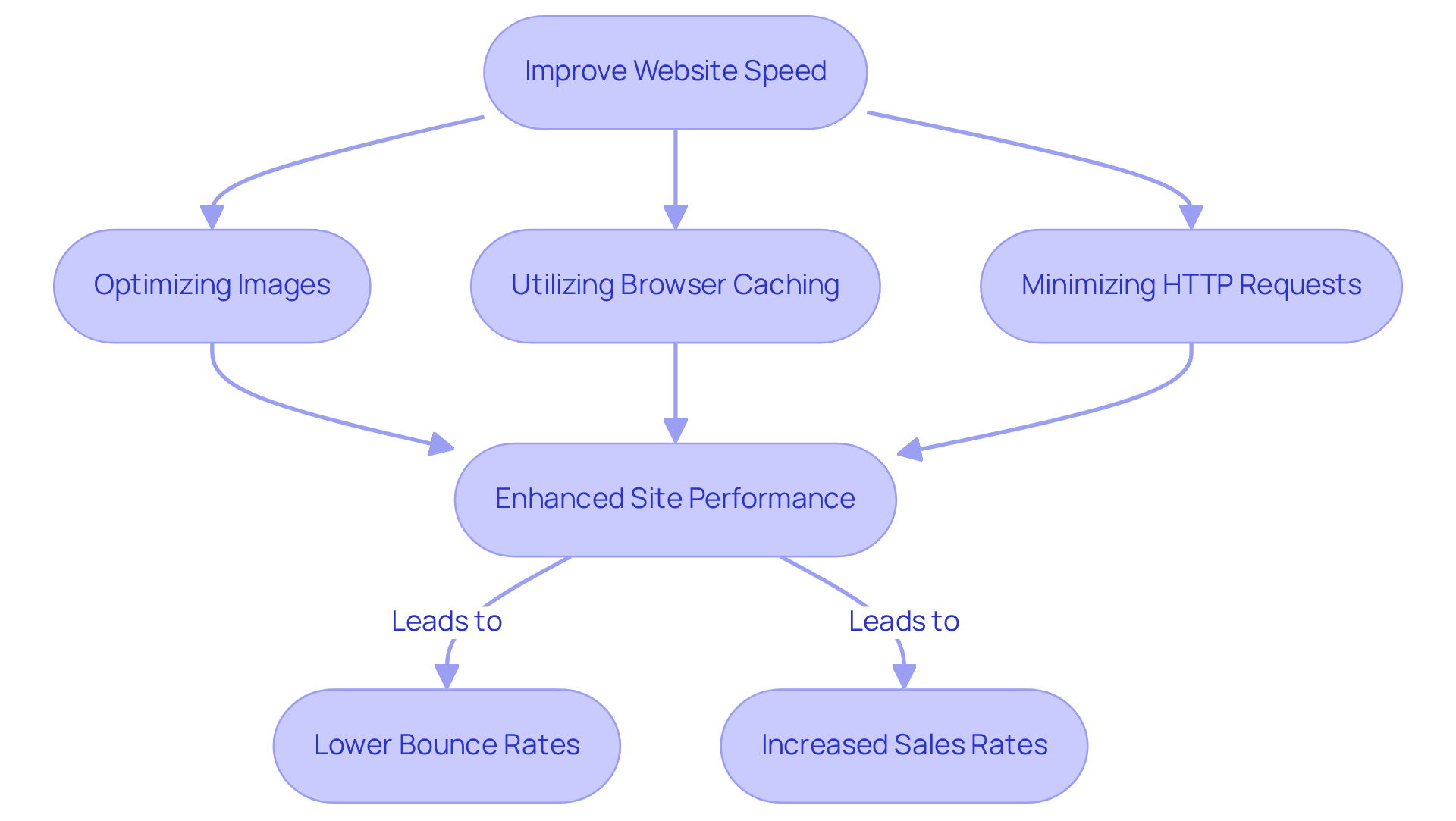
Personalize User Experience to Boost Engagement and Conversions
Customizing the customer experience is not just beneficial; it is essential for web conversion optimisation and enhancing engagement in DTC companies. By leveraging data, these companies can tailor product suggestions, content, and marketing communications to the specific needs of individuals, thereby creating a more relevant shopping experience.
For instance, companies that implement dynamic content—adapting based on user behavior and preferences—foster a deeper connection with their audience. This strategy not only drives sales but also . Notably, statistics reveal that:
- 54% of marketers report improved engagement with their products due to increased personalization efforts, underscoring its effectiveness.
- A significant 71% of consumers anticipate personalized interactions.
- 76% express frustration when these expectations are not met.
Consequently, DTC brands that prioritize tailored consumer experiences can leverage web conversion optimisation to witness substantial improvements in both engagement and sales metrics. Additionally, data personalization at scale facilitates efficient customization without compromising quality, while AI-driven targeted promotions empower retailers to offer discounts aligned with individual shopping preferences.
Establishing robust governance to unify disparate tools is crucial for delivering more relevant and personalized customer engagement.
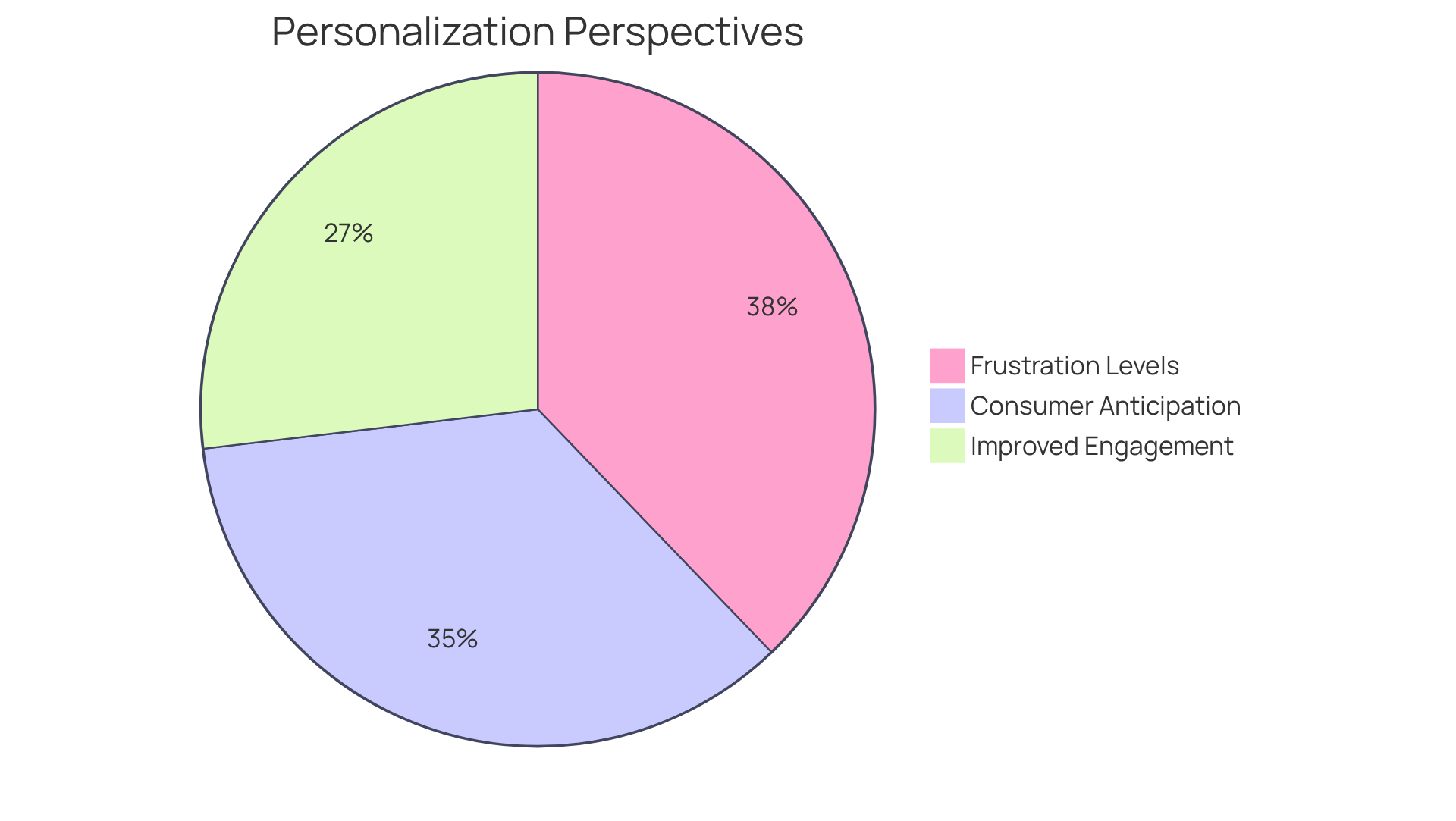
Utilize Clear and Compelling Calls to Action
Effective Calls to Action (CTAs) are essential in steering individuals through the transition process. At Parah Group, we assert that clarity, conciseness, and visual distinction in CTAs are pivotal for achieving results. DTC companies must prioritize prominent phrases like 'Buy Now' or 'Get Started,' strategically positioned throughout their websites to maximize engagement and encourage immediate action.
Research indicates that personalized CTAs can convert 42% more viewers than generic options, performing 202% better than basic CTAs. This underscores the importance of tailoring messages to individual preferences. Furthermore, placing a CTA at the end of a product page can enhance results by 70%, while positioning CTAs above the fold significantly improves their visibility and effectiveness.
is crucial; neglecting to test different versions of a CTA represents a missed opportunity for optimization. For instance, including a single, clear CTA in emails can increase clicks by 371%. By consistently refining CTAs based on audience behavior and feedback, companies can substantially improve their web conversion optimisation tactics and increase engagement, ultimately fostering both sustainable growth and profitability.
At Parah Group, we customize our strategies to meet the unique needs of each client, ensuring our approach aligns with their specific goals and market dynamics. Our onboarding process includes a dedicated call to establish a roadmap for success, allowing us to implement these strategies effectively and maximize results.
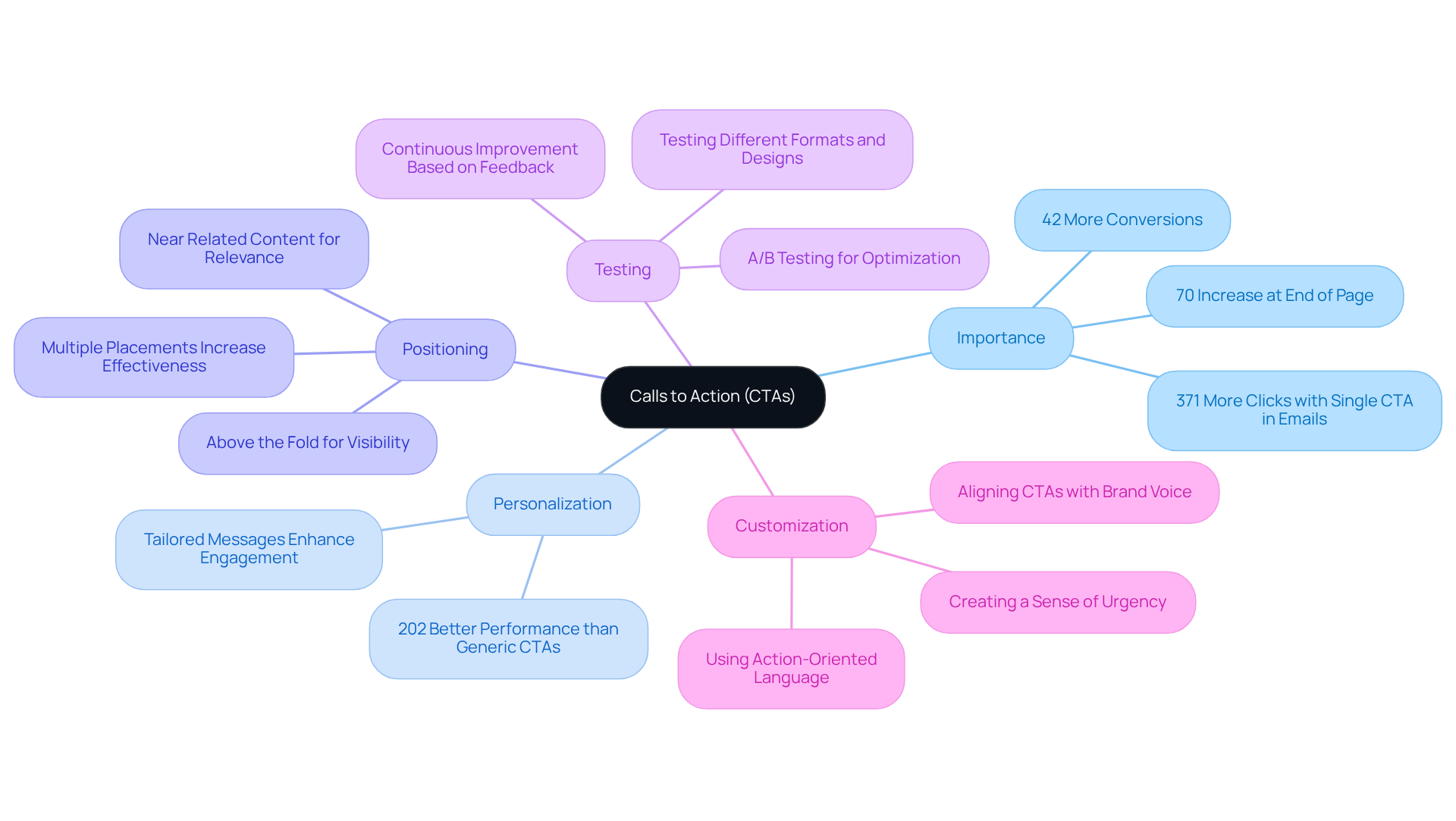
Simplify Navigation for Enhanced Usability
A well-structured navigation system is not merely beneficial; it is essential for enhancing usability in DTC brands. By simplifying navigation menus through the limitation of options and the use of clear, descriptive labels, companies can significantly elevate the user experience.
Research indicates that can lead to a remarkable 36% increase in engagement rates, as users are more inclined to interact with websites that facilitate swift information retrieval. Furthermore, establishing a logical hierarchy aids in comprehension and promotes mobile-friendliness—an increasingly critical factor, given that over 52% of online traffic originates from mobile devices.
By prioritizing simplicity and clarity in navigation, DTC companies can achieve web conversion optimisation, ultimately driving higher purchase rates and boosting customer satisfaction.
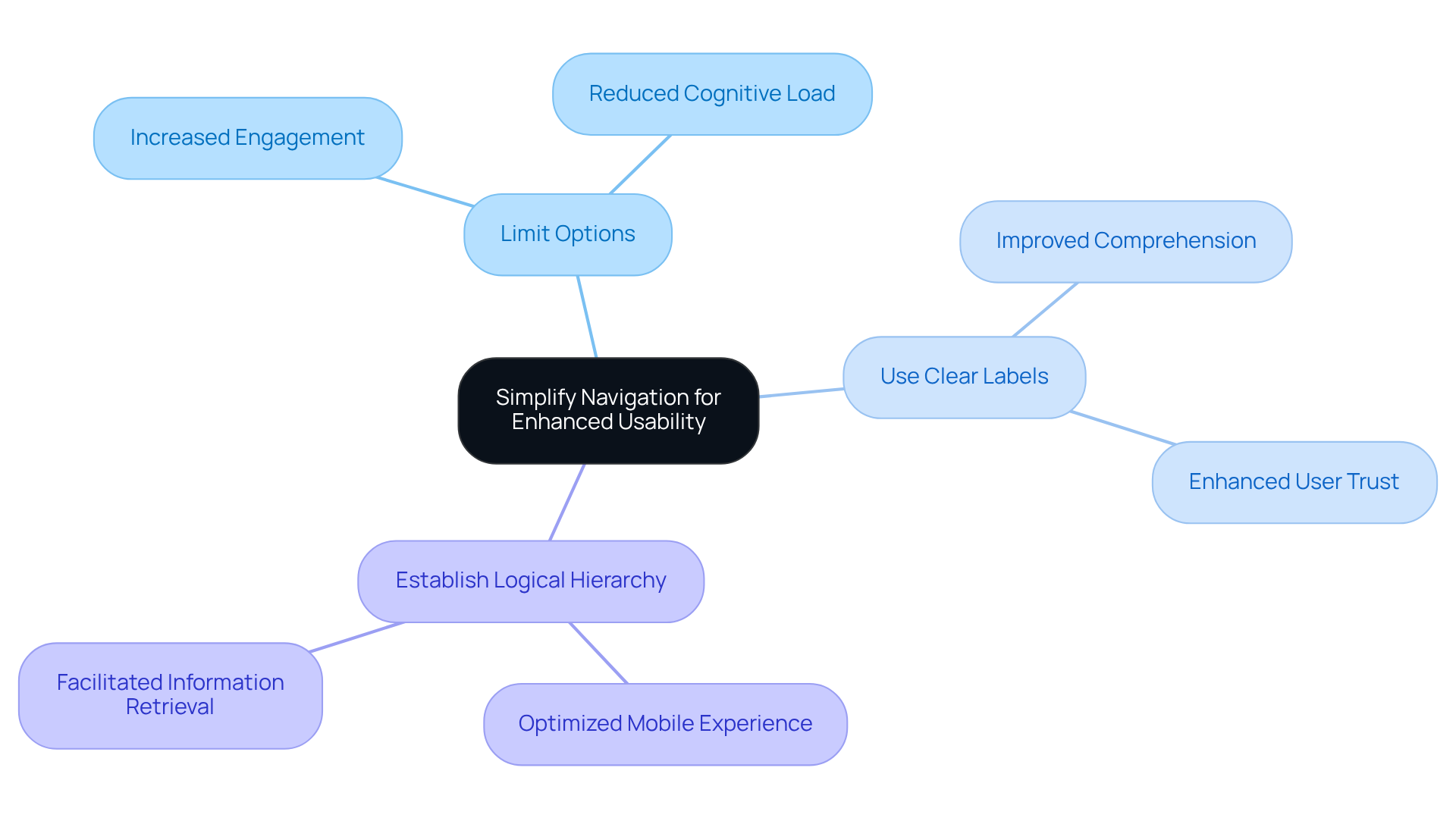
Incorporate High-Quality Visuals and Videos
High-quality visuals and videos significantly elevate the user experience on DTC websites. Brands must invest in professional photography and engaging video content that effectively showcases their products. Such visuals not only capture interest but also facilitate the communication of the company's narrative and values. This approach , ultimately driving business success.
Conduct A/B Testing for Data-Driven Decisions
A/B testing serves as a powerful tool for DTC companies, enabling them to assess various versions of web pages or specific elements. This process allows them to pinpoint which configurations deliver optimal performance. By experimenting with diverse layouts, text, and design components, companies can gain actionable insights that significantly enhance web conversion optimisation and audience engagement.
High-growth DTC companies that leverage A/B testing frequently report substantial improvements in key performance metrics. Studies indicate a remarkable 20-40% increase in and 15-30% enhancements in Return on ad spend (ROAS). Regular implementation of A/B tests ensures brands remain in tune with evolving user preferences, allowing for swift adaptation to market trends.
This iterative approach fosters a culture of continuous improvement, transforming organizations from reactive speculation to proactive scaling. Data-informed decisions contribute to web conversion optimisation, which leads to optimized user experiences and increased profitability.
As industry specialists emphasize, 'By systematically testing and optimizing key elements of your ecommerce strategy with web conversion optimisation, you can make informed choices that improve client satisfaction and drive revenue growth.
Implement Live Chat or AI Chatbots for Enhanced Customer Support
Incorporating live chat or AI chatbots into DTC websites significantly enhances support for clients. These tools provide prompt assistance, addressing inquiries and guiding individuals through the purchasing journey. Research indicates that live chat can significantly contribute to web conversion optimisation by boosting conversion rates by up to 20%, as clients value immediate support and personalized interactions. Notably, 79% of companies report that live chat has positively influenced their sales and revenue, with businesses experiencing a 48% increase in revenue per chat hour due to live chat usage. Furthermore, individuals utilizing live chat typically spend up to 60% more per transaction compared to those who do not engage with these tools. Participants interacting via live chat prior to purchasing have a ~40% greater likelihood of completing an online transaction.
DTC brands like Telnyx have successfully implemented AI chatbots to streamline client interactions, alleviating agent workload while enhancing the user experience. Their chatbot not only improves response times but also fosters loyalty, as 63% of consumers are . Additionally, AI-powered chatbots can provide tailored suggestions, increasing success rates by 15-20%. Live chat achieves a 73% satisfaction score, in contrast to 61% for email and 44% for phone support, underscoring its effectiveness in boosting client satisfaction. As consumer expectations continue to rise, investing in live chat and AI solutions is essential for companies aiming to enhance their support and achieve web conversion optimisation. Consider integrating a live chat solution that facilitates personalized interactions to elevate client engagement.
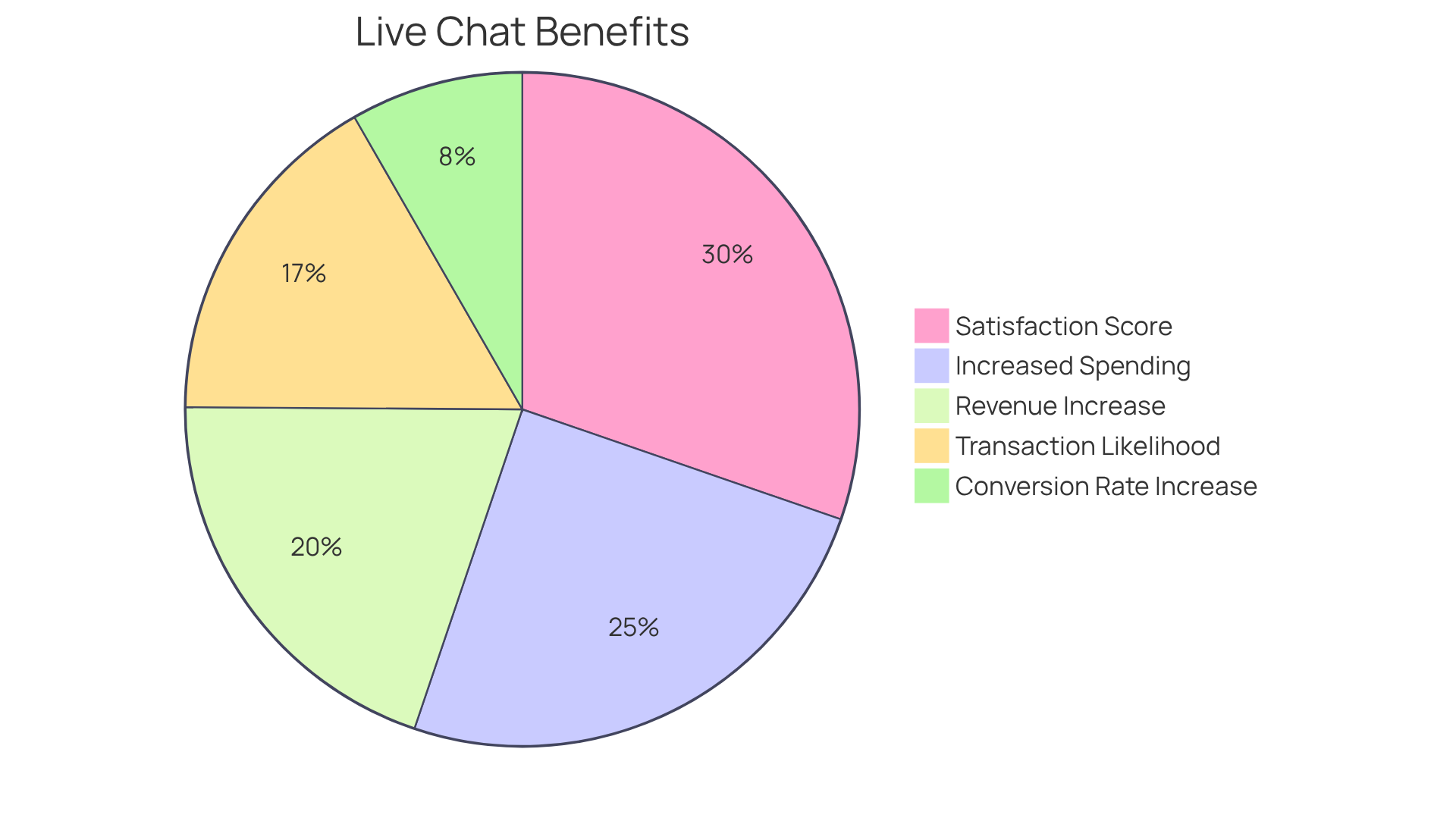
Utilize Exit-Intent Popups to Capture Potential Conversions
Exit-intent popups serve as a crucial mechanism for recapturing abandoning visitors, granting companies a valuable second opportunity to engage potential customers. By triggering a popup when a user exhibits signs of leaving the site, companies can present enticing offers or solicit email subscriptions, effectively securing leads that might otherwise be forfeited. This strategy has demonstrated a significant impact on conversions, with exit-intent popups capable of by 2% to 4% and recovering up to 30% of abandoned carts, underscoring their financial significance.
For example, brands like My Skin Feels have adeptly implemented exit-intent popups that provide discounts in exchange for email captures, successfully transforming hesitant visitors into prospective buyers. Similarly, Kloo's approach of showcasing a physical product in their exit pop-up not only captivates visitors but also gathers valuable customer information.
Marketing professionals underscore the necessity of employing exit-intent strategies judiciously. As articulated by Aaron Brooks, a targeted exit pop-up can convert individuals who have demonstrated interest in specific content, positioning it as a strategic tool rather than a mere afterthought. This aligns with the understanding that effective communication and personalization are vital for enhancing engagement, with 72% of consumers more inclined to interact with companies that tailor their messages. Personalization in exit-intent popups can significantly elevate customer engagement, rendering them more effective.
Incorporating exit-intent popups into a DTC brand's web conversion optimisation toolkit not only helps in recovering lost leads but also creates a more engaging experience, ultimately driving higher conversion rates and amplifying overall profitability. However, it is imperative to utilize these strategies as a safety net rather than a remedy for website issues, ensuring that the overall user experience remains seamless.
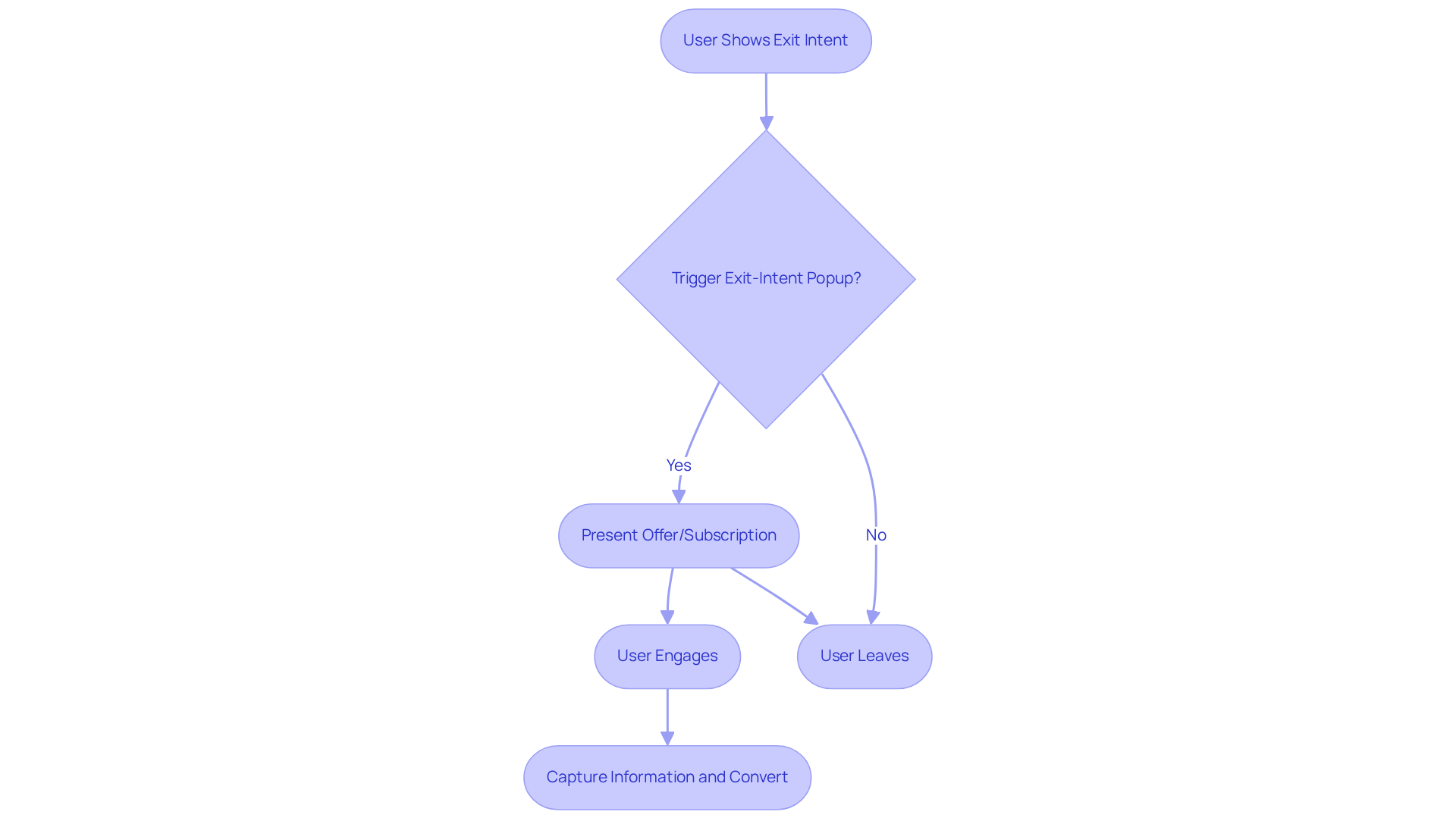
Conclusion
Implementing effective web conversion optimization strategies is essential for direct-to-consumer (DTC) brands aiming to thrive in a competitive landscape. By focusing on tailored approaches that enhance user experience, streamline navigation, and utilize data-driven insights, brands can significantly boost their conversion rates and foster lasting customer relationships.
Key strategies include:
- Leveraging analytics and user feedback to inform improvements
- Enhancing website speed and performance
- Personalizing user experiences to engage consumers effectively
- Utilizing clear calls to action
- Simplifying navigation
- Incorporating high-quality visuals
- Conducting A/B testing
- Adding live chat or AI chatbots
Ultimately, the significance of these strategies cannot be overstated. As DTC brands continue to evolve, embracing these essential practices will not only optimize conversion rates but also elevate the overall customer experience. By prioritizing these tactics, brands can cultivate loyalty and ensure long-term success in the ever-changing digital marketplace.
Frequently Asked Questions
What services does Parah Group offer for conversion rate optimization?
Parah Group provides a comprehensive range of web conversion optimization services tailored for direct-to-consumer (DTC) companies, including client session recordings, competitor analysis, persuasive copywriting, UI/UX design, customer surveys, and ongoing A/B testing.
How does Parah Group's strategy help DTC companies?
Their thorough strategy ensures that every element of a client’s website is optimized for peak performance, addressing the unique challenges faced by DTC companies in a competitive marketplace, ultimately enhancing conversion rates and driving growth.
What role do analytics and user feedback play in improving conversion rates?
DTC companies can enhance their success rates by leveraging analytics tools and integrating user feedback from surveys and interviews to gain insights into customer preferences and pain points, enabling informed decisions that improve customer experience and conversion optimization.
How effective are client reviews in boosting conversions?
Research indicates that displaying client reviews can boost conversions by as much as 270%, highlighting the importance of incorporating customer feedback into web conversion optimization strategies.
Why is website speed important for conversion optimization?
Improving website speed is crucial as a 1-second delay in page response can reduce effectiveness by 7%. Faster websites enhance user experience, lower bounce rates, and lead to increased sales rates.
What tools can be used to enhance website speed and performance?
Tools like Google PageSpeed Insights are valuable for identifying specific areas for improvement to enhance website speed and performance.
What are some methods to improve website speed?
Methods include optimizing images, utilizing browser caching, and minimizing HTTP requests to significantly enhance site performance.
Can you provide an example of a brand that improved its performance through site speed optimization?
Best Buy experienced a remarkable 20% rise in performance after optimizing their site speed, demonstrating the tangible benefits of these strategies.
FAQs











